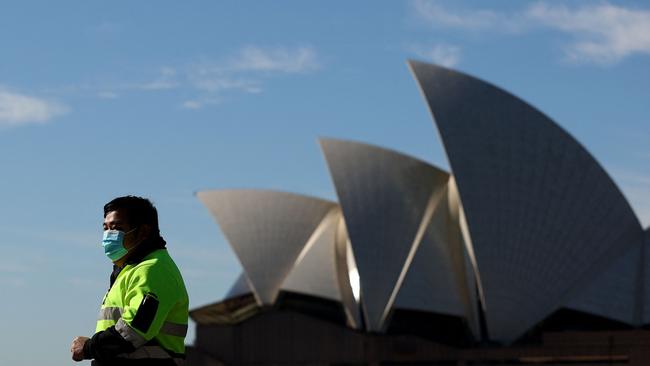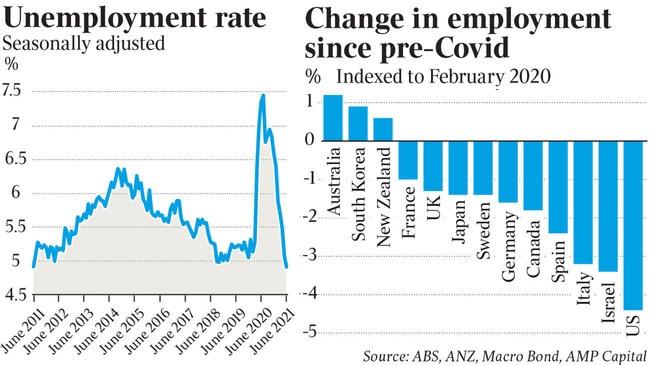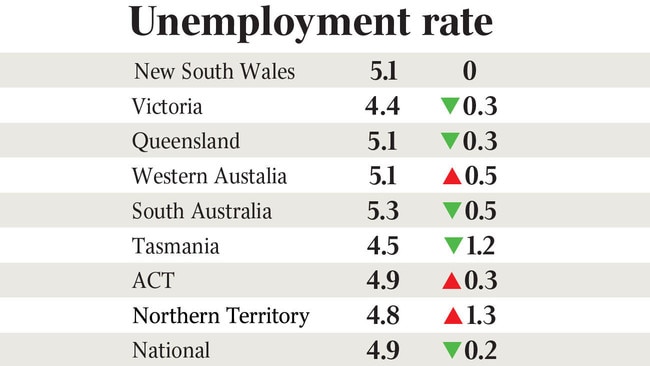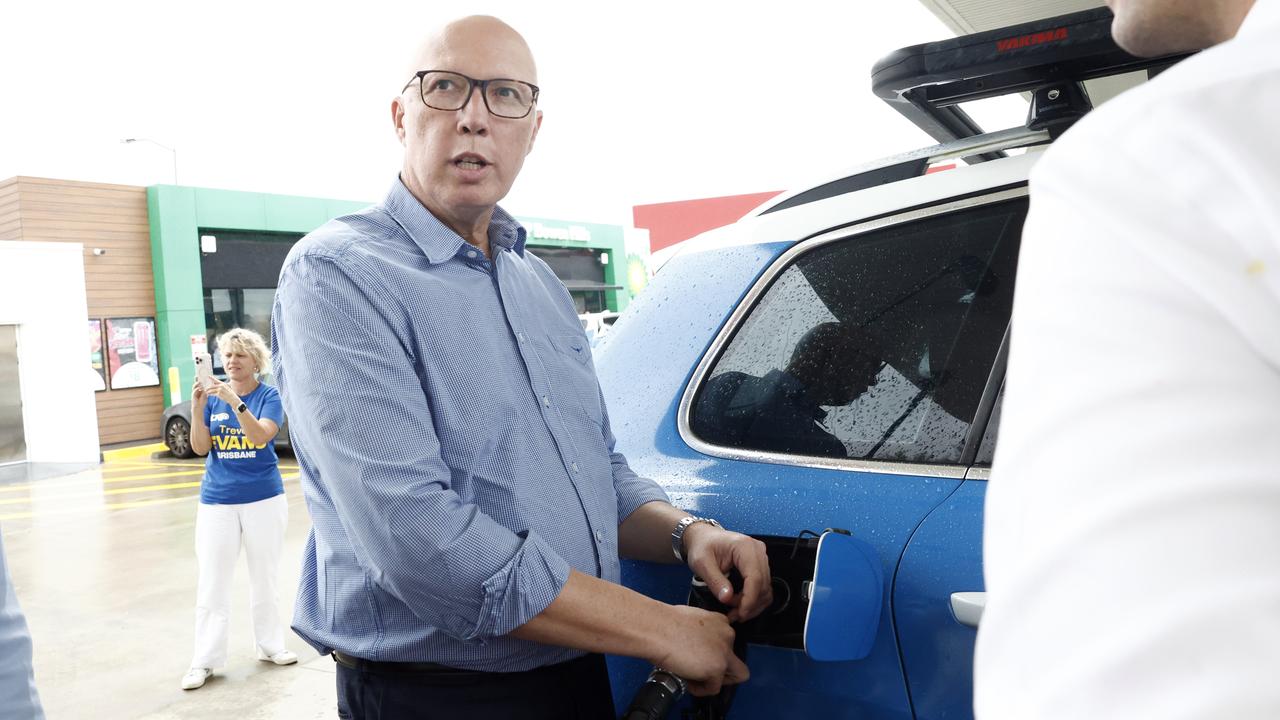Rebound at risk as jobless rate hits decade low of 4.9pc
Businesses nationally shrugged off renewed Covid-19 outbreaks and Melbourne’s two-week lockdown to add 29,000 jobs in June.

Sydney’s extended lockdown and renewed restrictions in Victoria threaten to end a powerful labour market recovery that created 29,000 jobs in June and pushed unemployment down to 4.9 per cent – its lowest level in a decade.
The ABS seasonally adjusted data showed full-time employment increased by 51,600 last month, offset by a 22,500 decline in part-time employment. This compared with the consensus forecast among bank economists that an additional 20,000 jobs would be created, and that unemployment would remain steady at 5.1 per cent.
Instead, the key jobless rate fell to its lowest since June 2011.
ABS head of labour statistics Bjorn Jarvis said “the declining unemployment rate continues to coincide with employers reporting high levels of job vacancies and difficulties in finding suitable people for them”.
Queensland and Western Australia drove the overall lift in employment, recording gains of 0.6 per cent and 0.9 per cent, respectively, against the national increase of 0.2 per cent.
But the strong headline jobs numbers masked an 8.4 per cent plunge in hours worked in Victoria, as businesses responded to a two-week lockdown in the first half of the month by standing down employees – a period which coincided with the ABS’s labour force survey. That drove a 1.8 per cent drop in total working hours nationally in the month. Outside Victoria, hours worked increased by 0.5 per cent.
In contrast, there was only a much slighter 0.3 per cent reduction in employment in Victoria, representing 9000 fewer employed Victorians.
“This highlights the extent to which people in Victoria had reduced hours or no work through the lockdown, without necessarily losing their jobs,” Mr Jarvis said.
Economists said the data suggested Melbourne employers appeared more willing than in previous lockdowns to hold on to staff in the expectation restrictions would prove short-lived, although news of a five-day lockdown in the state is now likely to delay any rebound.

Employment in NSW dropped by 0.2 per cent in June, also equivalent to 9000 fewer employed and which economists said likely represented a correction after May’s incredibly strong figures.
While economists said Melbourne’s experience of plunging hours worked but relatively few job losses was positive, CBA head of Australian economics Gareth Aird said the current Sydney lockdown was different. He said that extending restrictions to about seven weeks, from the anticipated five weeks now, “could see a significant number of NSW workers stood down” – potentially in the order of 200,000.

Balanced against job gains elsewhere in the country, that could lead to a “small” increase in unemployment in July and August – effectively ending an eight-month stretch of falling unemployment. EY chief economist Joanne Masters, however, said the $5bn joint commonwealth and state financial support package for NSW would “go some way to mitigating any labour market disasters”.
The ABS data also showed further good news for youth unemployment, which declined half a percentage point to 10.2 per cent – 1.4 percentage points below the level immediately ahead of the pandemic and at its lowest since the start of 2009.
With Victorians working far fewer hours, the underemployment rate – which measures the proportion of workers with jobs but looking for more hours – moved higher to 7.9 per cent, from 7.4 per cent in May.
The labour force participation rate held steady at a near record 66.2 per cent.
The latest figures come after employment surged by more than 115,000 in May, driving the jobless rate down to 5.1 per cent.
The key jobless measure is now just below where the Reserve Bank of Australia in May thought it would be by the end of the year, and on track to meet the central bank’s best case scenario of 4.5 per cent by December.




To join the conversation, please log in. Don't have an account? Register
Join the conversation, you are commenting as Logout